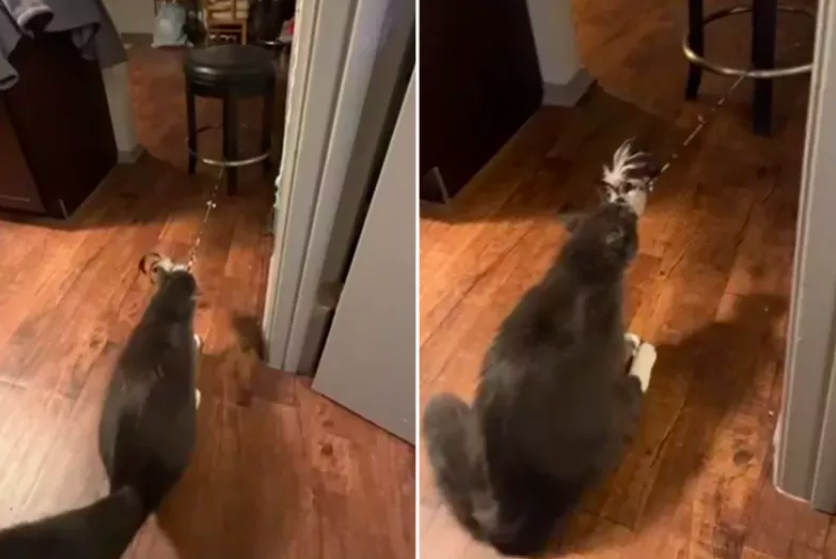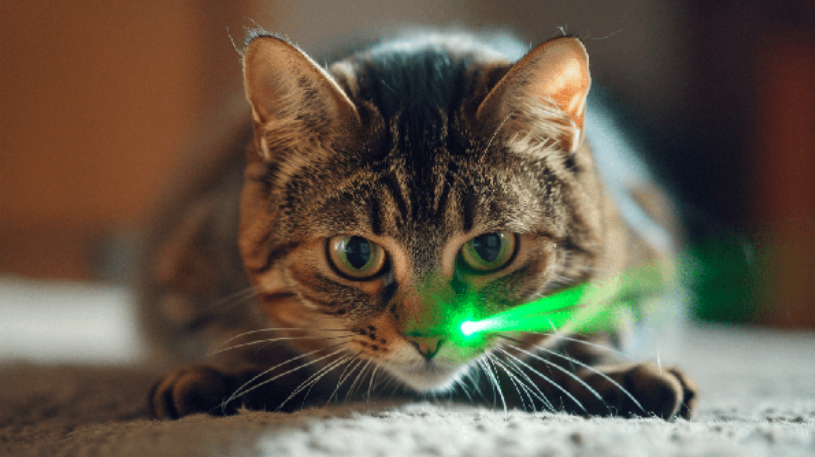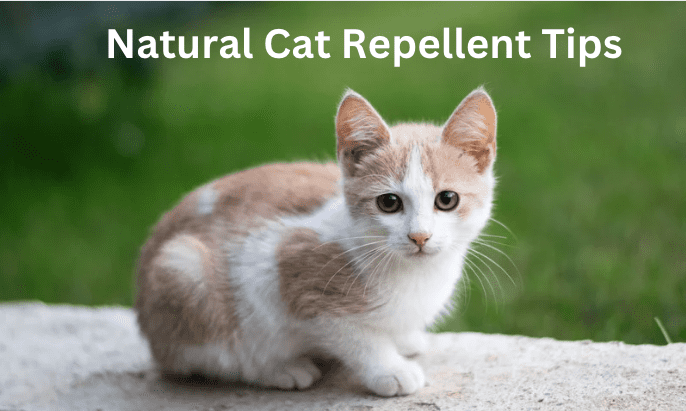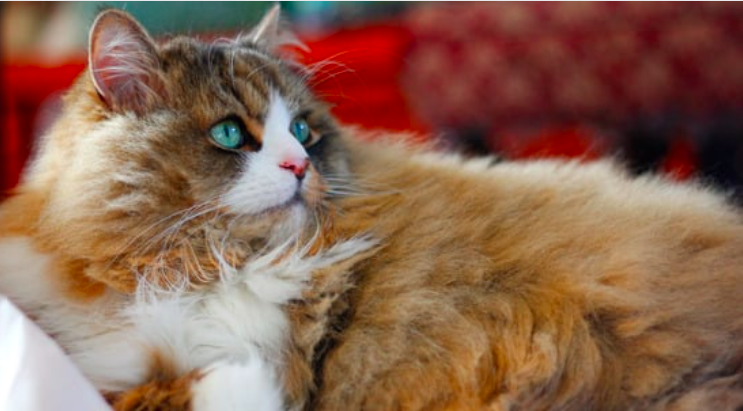Cats
The Enigmatic Elegance of the Black Maine Coon Cat

The Enigmatic Elegance of the Black Maine Coon Cat
The Black Maine Coon cat exudes an aura of mystery and sophistication with its dark coat and striking appearance. As a variant of the popular Maine Coon breed, these black felines possess the same large size, tufted ears, and friendly nature.
Their ebony fur adds an element of allure to their already captivating features, making them a sought-after choice for those who appreciate both the charm of the Maine Coon and the elegance of a black coat.
If you’ve found your way to this article, it’s likely because you have a soft spot in your heart for cats – more specifically, big fluffy ones!
You might be debating whether or not a cat would make a suitable pet for you, or whether or not this particular breed would do well in your environment. It’s possible that you’re just really interested in gaining more knowledge about this magnificent giant breed.
This guide will tell you everything you need to know about the Maine Coon, with a bit of an emphasis on the black color variation, regardless of the reason you are interested in the breed.
In recent years, Maine Coon cats, in general, have garnered a lot of attention due, in large part, to the large size of the breed as well as the gentle nature of the cats.
The exposure that this breed has received on social media platforms, most notably Instagram, has resulted in what appears to be an overnight rise to fame and popularity.
This guide will introduce you to the various colors and types of Maine Coons, as well as discuss the size of these cats as well as important aspects of their personalities.
We have also provided information on how to properly care for and maintain the health of a Maine Coon if you are considering bringing one into your home.
Finally, we investigate their background and bust some of the more widespread myths that have grown up around them. Prepare yourself to be educated on everything there is to know about the Maine Coon!
Origin And History Of The Cat
First things first, let’s go over some general information about Maine Coon cats.

The Maine Coon cat is one of the oldest breeds of cats that is still in existence today, and it was originally found in North America.
You probably already knew this, but the Maine Coon cat is a species that can only be found in the state of Maine. It is the official state animal of the state that is located in the northeast.
Although it appears to be related to both the Norwegian Forest Cat and the Siberian domestic cat, the exact origins of this particular breed of domestic cat are a mystery to everyone.
During the latter part of the nineteenth century, one of the most common cat breeds was called the Maine Coon. The first-ever North American Cat Show was held in New York in 1895, and the title of best cat went to a female Maine Coon named Cosey.
After 1911, the breed began to experience a decline in popularity as a direct result of the introduction of various other long-haired breeds, such as the well-known Persian cats.
It wasn’t until the 1970s that Maine Coon cats started making a comeback, which led to their popularity rising to the position of the third most popular cat breed in the world today. Congratulations, you Maine Coons!
Different Colors Of The Maine Coons
There are variations in the appearance of Maine Coon cats.
Even though their bodies and coats are constructed in a strikingly similar manner, there is a wide variety of color and pattern combinations available for these animals.
Solid colors
There are a variety of solid colors available for the Maine Coon, including black, white, red, cream, and blue.
Red Maine Coon cats typically have a gingered, orange color rather than a true red coat, and blue cats typically have a coat that looks more like gray or silver than blue.
Smoke Pattern
The smoke pattern gives the cat’s fur a very light base at the root and gradually becomes darker as it moves toward the tip.
Patterns of Tabby Cats
The traditional tabby pattern consists of wide stripes that spiral around the cat’s coat and a butterfly pattern that spans across the shoulders.
The mackerel tabby has stripes that are narrow and similar to those of a tiger. These stripes are arranged in a fishbone pattern along the spine, and additional stripes fan outward from there.
The ticked tabby is distinguishable from the others mentioned because its coat has a tendency to have fewer stripes and a more flecked color pattern. This is because each individual strand of hair contains a variety of colors.
The “M” that appears on the foreheads of tabby cats is a distinguishing characteristic of this breed. Egyptian legends state that the “M” stands for “Mau,” which is the Egyptian word for cat.
Religious tales claim that this “M” is the result of either Muhammed touching a cat’s forehead in Islamic legend or Mary doing the same in Christian legend. Other tales state that the “M” stands for “M,” which is the Egyptian word for cat.
It is a clear marker for tabbies, and its origin could have been one of these legends, or it could simply be due to a pattern in their DNA.
The pattern Of Bi-Colors
This variation utilizes white in conjunction with one other color.
Bi-color cats almost always have white on their chest and tummy areas, as well as on all four of their paws, giving them the appearance of a sleek tuxedo. This is true even though there are many different secondary color options.
Different Varieties Of The Black Maine Coon Cat
Can you think of any color schemes or patterns that would look good on a black Maine Coon cat?
There are several distinct variations, each of which is broken down into its section below.
Solid Black Maine Coon Cat
This variety has a coat that is the color of coal, and each hair on its body is black, all the way from the root to the tip.

These cats will have inherited the dominant black color gene from both of their parents, as well as the recessive “non-agouti” gene.
This means that they will not have the tabby pattern, nor will their fur be diluted in any way. Additionally, they will have inherited the dominant black color gene from both of their parents.
Smoke Black Maine Coon Cat
The smoky darkness of the Cats with the Maine Coon breed is guaranteed to have at least one parent that is a carrier of the smoke gene.
These cats tend to appear black while they are still, but as soon as they begin moving around, they take on a more silvery appearance. This is because you can see more of their white undercoats when they are moving.
Additional Varieties Of The Black Maine Coon
The following are additional subspecies of black Maine Coon cats:
- Alternating shades of black and white (also referred to as tuxedo cats)
- Black silver Maine Coon cats (which is a particularly rare breed)
- Black-tabby (which has brown colorings)
- Black silver tabby
- Tortie, also known as a black tortoiseshell Maine Coons (which have black coats with
- Patterns of red colors)
Did you know that there is also a grey and orange variety of the Maine Coon?
Facial Features
The eyes of a Maine Coon cat are one of the most distinguishing features of this breed of cat.
Their eyes are typically shaped like almonds and are set widely apart. Amber or green coloration can be seen in the eyes, although the coloration may also take on the appearance of copper, orange, gold, yellow, or green amber.
If you find a black Maine Coon kitten with blue eyes, you might be surprised by what you see. This is a phase that only lasts as long as the kitten is young.
As they get older, their eyes will almost always transition into a spectrum that is somewhere between amber and green.
There is a small chance that some black Maine Coons with some white fur will have blue eyes, but this is an extremely uncommon occurrence!
In addition to their all-black coats, Black Maine Coon cats typically have other black features as well. In addition, their whiskers, noses, and paw pads almost always have a dark coloration to them.
Even though they lack eyebrows, they do have long vibrissae hairs above their eyes that are dark in color. These hairs are called vibrissae. You probably already knew this, but black Maine Coons have black ears and tufts on top of their heads.
The distinctive tufts of lynx-like fur that protrude from the tops of the ears of Maine Coons are one of the breed’s most defining characteristics. A wild and desirable quality that is cherished by a great number of cat lovers.
Size
The size of the Maine Coon is without a doubt one of the most distinguishing characteristics of this breed of dog.
They are one of the largest breeds of domestic cats that can be found, and some of them can appear to be unbelievable in size.
They have been referred to as “dog-like” and have been given the nickname “the gentle giant” for this reason, among the other reasons we will discuss further down.
There is a significant size disparity among members of the Maine Coon family, even though this breed is typically quite massive.
Women typically weigh between 8 and 12 pounds (3.5 and 5.5 kilograms), while men typically weigh between 13 and 18 pounds (6-8 kilograms).
The average height of a Maine Coon is between 10 and 16 inches (25 to 40 centimeters), and their total length, including their tails, can frequently approach or even exceed 3 feet in length.
Their tails are quite distinctive, as they are long, slender, and covered in dense fur; in this respect, they are quite comparable to the tails of raccoons (hence the name). Their tails can grow to be up to 14 inches (or nearly 40 cm) in length.
In 2010, the Guinness World Records recognized Stewie, a purebred male Maine Coon, as the longest cat in the world.
Stewie measured 48.5 inches (123 centimeters) from the tip of his nose to the tip of his tail, making him the longest cat in the world at the time. This can give you an idea of how magnificent this breed can be.
The current record holder for the longest-living cat is a Maine Coon by the name of Barivel. He has a length of 47.2 inches, which is equivalent to 120 centimeters.
When Barviel is standing on his hind legs, the tips of his front paws can come very close to touching the shoulders of a person of average height. What a colossal domestic feline you have there!
Temperament
There is no correlation between the large size of the Maine Coon and the fact that they are particularly vicious or hostile.

These felines are the complete antithesis of that. They are known to maintain a playful attitude throughout their lives, one that is comparable to that of a young kitten.
Cats of the Maine Coon breed are friendly creatures that are full of energy and affection and are very at ease in the company of both children and other animals.
It is important to keep in mind that the Maine Coon is a breed that needs daily exercise and does not do well being left alone for extended periods before you decide to add one of these dogs to your household.
The Maine Coon can be compared to a dog for a variety of reasons, some of which are listed here. Since black Maine Coons appear more regal and almost haughty, many people have the misconception that they are more mysterious or serious in nature.
The smoky color of their fur, however, does not accurately portray their personalities. Cats that are bred to be Black Maine Coons have personalities that are just as loving and lively as any other cat of their kind.
If you want to maintain the health of your Maine Coon, you should think about letting them play outside daily, unless your house has enough space for them to be physically active there.
If they spend the majority of their time inside, you absolutely need to invest in a sizable indoor cat tree of some kind so that they have a place to climb, stretch out their muscles, and scratch.
There is a common misconception that black cats, including black Maine Coon cats, and black cats, in general, are unlucky.
This is just a relic from long-forgotten legends and superstitions, and it doesn’t really have any bearing on how these magnificent creatures behave.
Their dark coats are a treasure, and the fact that they have black fur should not dissuade you from getting one of your very own.
Concerning Health and Care
There is a widespread misconception that cats can look after themselves and do not require any form of care at all.

Even though it’s true that cats are more self-sufficient than other types of pets, they still need a significant amount of attention and care from their owners. That is without a doubt the case with the cat known as the Maine Coon.
Before adopting, prospective owners need to be aware of several important factors before making their decision, including the provision of food, water, companionship, and enrichment.
The long coat of the Maine Coon is susceptible to matting, tangling, and filth buildup due to its length. Therefore, you should brush this breed of dog at least once a week, if not more frequently than that.
Because it is a task that can be quite challenging and time-consuming, the most effective strategy is to initiate the practice at an extremely young age.
Be aware that because Maine Coons have long hair, they have a propensity to shed their fur and whiskers frequently; therefore, you should be prepared to vacuum regularly.
Because this breed is predisposed to gingivitis, another aspect of grooming that you should keep in mind is proper oral hygiene.
You will need to make an investment in a cat toothbrush and special toothpaste that is safe for cats. After that, you should aim to clean your cats’ teeth once per day, or at the very least, twice per week.
Developing this pattern of behavior when they are still young will make it much simpler for you to train them when they are older.
To maintain their health and provide them with fuel for their energy, Maine Coons do not require anything beyond high-quality food in their diet.
When shopping for food for your cat, look for brands that include a taurine supplement. This will help keep your cat’s color and protect it from sunburn.
Price For Maine Coon Cat
The cost of owning a Maine Coon is the final aspect of the cat breed that we are going to investigate here today.
The distinction between animals of pure breed and those of other variations is the most important point to take away from this.
Due to the possibility that purebred black Maine Coon cats are not as common as cats of other color variations, the price of a purebred black Maine Coon cat will be higher.
The cost of a black Maine Coon cat can range anywhere from $500 to $2,000 on average. A stray may end up in a shelter, but responsible breeders will encourage their customers to return the animal if they find that they can no longer care for it.
Importantly, purebred Maine Coon cats are less likely to have underlying health conditions because they are bred to have those characteristics, and they are more likely to have the temperament of a large, playful cat.
This is because they are more likely to have the temperament of a large cat. If you are interested in acquiring a Maine Coon crossbreed at a lower cost, you should take these considerations into account.
Conclusion
We have discussed the average size and weight of this gorgeous breed, as well as the various color variations that can be found in them, the history of their ancestry, and their typical personality.
Now all that is left for you to do is choose between this affable Maine Coon and the other available options.
If you are not yet persuaded but are interested in looking into other wonderful breeds of cats, we highly recommend the Orange Tabby Cat.
Questions People Also Ask: (FAQs)
What is a Black Maine Coon cat?
A Black Maine Coon cat is a variant of the Maine Coon breed characterized by its large size, tufted ears, bushy tail, and distinctive black coat. It’s an elegant and captivating feline that stands out due to its deep, rich color.
Are Black Maine Coons different from other Maine Coon cats?
Black Maine Coon cats share the same physical characteristics and friendly personality as other Maine Coons. The main distinction is their coat color, which is solid black. Otherwise, they possess the same endearing traits that make the Maine Coon breed popular.
How do I care for a Black Maine Coon’s coat?
Caring for a Black Maine Coon’s coat is similar to caring for other Maine Coons. Regular grooming is essential to prevent matting and maintain coat health. Black fur can show shedding more prominently, so frequent brushing and a balanced diet can help minimize shedding and maintain the glossy appearance of their coat.
Do Black Maine Coons have any specific traits or characteristics?
While coat color doesn’t significantly affect a cat’s behavior, Black Maine Coons are likely to share the same friendly and affectionate temperament as other Maine Coon cats. Their color simply adds an element of visual elegance to their personality.
Are Black Maine Coons considered rare?
Black Maine Coons are not extremely rare, but they are relatively less common compared to other coat colors. Their striking appearance and the appeal of their dark coat contribute to their popularity among cat enthusiasts.
We appreciate you for taking the time to read!
Finally, we hope you found this article interesting? And what do you think about ”All You Need To Know About The Life & Features Of The Black Maine Coon Cat!?”
Please you should feel free to share or inform your friends about this article and this site, thanks!
And let us know if you observe something that isn’t quite right.
Cats
Clever Cats: Breeds That Learn Fast
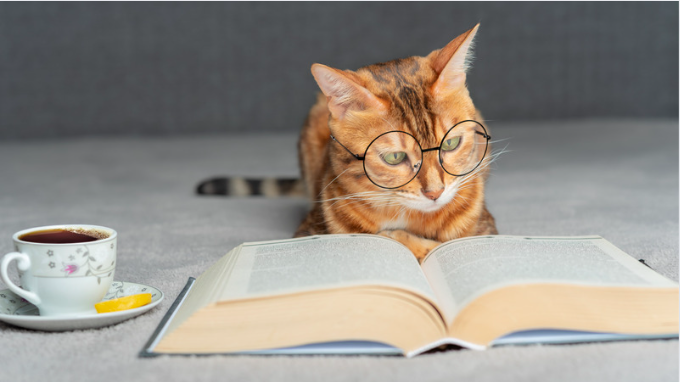
Clever Cats: Breeds That Learn Fast
Cats have always fascinated us with their agility, independence, and sometimes enigmatic behavior. Among the vast array of feline breeds, some stand out for their remarkable intelligence and ability to learn quickly.
In this article, we will delve into the world of these exceptional cat breeds, exploring their unique characteristics, training capabilities, and what makes them such quick learners.
Whether you’re a seasoned cat owner or considering adopting a new feline friend, this comprehensive guide will help you understand the breeds that are not only intelligent but also a joy to train.
Why Intelligence Matters in Cats
Understanding Feline Intelligence
Feline intelligence is a multi-faceted trait that encompasses problem-solving abilities, social learning, and adaptability. Unlike dogs, cats often showcase their intelligence in more subtle ways, such as manipulating objects to get what they want or learning routines and commands.
Benefits of Owning Intelligent Cats
Owning an intelligent cat comes with several benefits. These cats are more interactive and engaging, making them excellent companions. They can learn tricks, follow commands, and even understand basic household rules, which makes living with them more enjoyable and less challenging.
Top Cat Breeds Known for Their Intelligence
Abyssinian
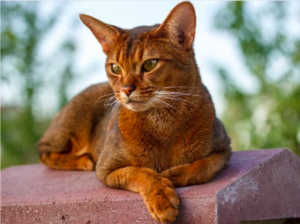
Overview
The Abyssinian is often hailed as one of the smartest cat breeds. Known for their curiosity and playful nature, Abyssinians are quick learners who thrive on mental stimulation.
Training and Activities
Abyssinians are highly trainable and enjoy interactive toys and puzzle feeders. They can learn tricks such as fetching and even walking on a leash. Their love for heights means they appreciate cat trees and climbing structures.
Siamese
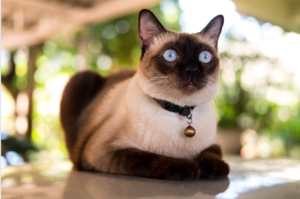
Overview
Siamese cats are not only intelligent but also highly vocal and sociable. They form strong bonds with their owners and are always eager to engage in activities.
Training and Activities
Siamese cats are quick to learn tricks and commands. They enjoy interactive play and can be trained to perform simple tasks like opening doors or retrieving items. Their vocal nature also makes them responsive to verbal cues.
Bengal
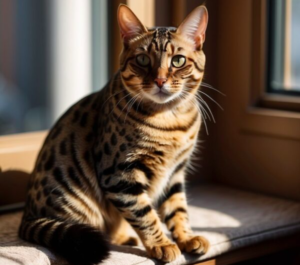
Overview
Bengals are known for their striking appearance and high energy levels. Their intelligence is reflected in their ability to solve problems and learn complex tasks.
Training and Activities
Bengals enjoy activities that challenge their minds, such as agility courses and puzzle toys. They can be trained to walk on a leash and perform tricks. Providing them with interactive playtime helps in channeling their energy positively.
Burmese
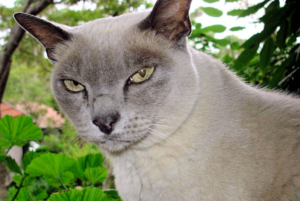
Overview
Burmese cats are affectionate, people-oriented, and intelligent. They enjoy being involved in family activities and can be trained to follow various commands.
Training and Activities
Burmese cats are quick learners and respond well to positive reinforcement. They enjoy learning tricks, playing fetch, and interactive games that stimulate their minds.
Scottish Fold
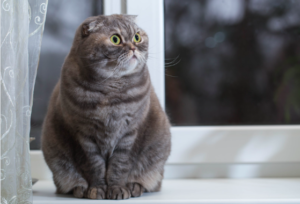
Overview
Scottish Folds are known for their distinctive folded ears and sweet demeanor. Despite their calm appearance, they are intelligent and can learn quickly.
Training and Activities
Scottish Folds enjoy interactive toys and games. They can learn tricks and commands and appreciate routines that keep their minds engaged.
Training Tips for Intelligent Cats
Start Early
Begin training your cat as early as possible. Kittens are more receptive to learning new behaviors and routines.
Use Positive Reinforcement
Reward your cat with treats, praise, or playtime whenever they successfully perform a desired behavior. Positive reinforcement strengthens the association between the action and the reward.
Keep Sessions Short and Fun
Cats have shorter attention spans than dogs, so keep training sessions brief and enjoyable. Incorporate playtime to make learning fun for your cat.
Be Patient and Consistent
Patience and consistency are key when training cats. Repeat commands and routines regularly, and avoid punishing your cat for mistakes. Consistency helps reinforce learning and builds trust.
Challenges of Training Intelligent Cats
Independence and Stubbornness
Intelligent cats can sometimes be independent and stubborn. They might choose to ignore commands if they are not in the mood, so it’s important to understand their behavior and work with it.
Need for Mental Stimulation
Highly intelligent cats require constant mental stimulation. Boredom can lead to behavioral issues, so ensure they have plenty of toys, activities, and interaction to keep their minds engaged.
Managing High Energy Levels
Breeds like Bengals have high energy levels that need to be managed. Providing them with enough physical and mental exercise is crucial to prevent destructive behavior.
Living with Intelligent Cats
Creating an Enriched Environment
An enriched environment is essential for intelligent cats. This includes a variety of toys, climbing structures, scratching posts, and interactive feeders to keep them stimulated.
Social Interaction
Intelligent cats thrive on social interaction. Spend quality time playing, training, and simply bonding with your cat to ensure they feel valued and engaged.
Understanding Their Needs
Each intelligent breed has its own unique needs and preferences. Understanding these and catering to them will help you build a strong and positive relationship with your cat.
Conclusion
Owning an intelligent cat can be an incredibly rewarding experience. These quick learners bring joy, challenge, and companionship to their owners. By understanding their unique characteristics and providing the right environment and training, you can foster a deep and fulfilling relationship with your feline friend.
Whether you choose an Abyssinian, Siamese, Bengal, Burmese, or Scottish Fold, you’re sure to enjoy the remarkable intelligence and personality they bring into your home.
Frequently Asked Questions (FAQs)
What makes a cat breed intelligent?
Intelligent cat breeds often show high levels of problem-solving abilities, adaptability, and social learning. They can quickly learn commands, tricks, and routines.
Can all cats be trained?
While some breeds are more receptive to training than others, all cats can be trained to some extent. Patience, consistency, and positive reinforcement are key to successful training.
What are the best toys for intelligent cats?
Interactive toys, puzzle feeders, and climbing structures are ideal for intelligent cats. These toys provide mental stimulation and keep them engaged.
How do I keep my intelligent cat from getting bored?
Provide a variety of toys, engage in regular playtime, and introduce new activities regularly. Rotating toys and creating an enriched environment also help prevent boredom.
Are intelligent cats more difficult to care for?
Intelligent cats can be more demanding in terms of mental stimulation and interaction. However, with the right approach and environment, they can be delightful companions.
We appreciate you for taking the time to read this article!
Finally, we hope you found this article interesting? And what do you think about ”Clever Cats: Breeds That Learn Fast!?”
Please feel free to share or inform your friends about this article and this site, thanks!
And let us know if you observe something that isn’t quite right.
Cats
The Enchanting Scottish Fold: A Guide to the Adorable Feline with Folded Ears
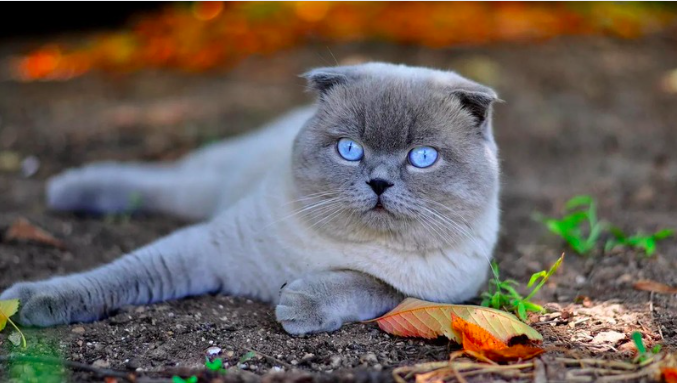
The Enchanting Scottish Fold: A Guide to the Adorable Feline with Folded Ears
Welcome to the world of the Scottish Fold cat, where charm and curiosity meet in an irresistibly adorable package. With their distinctive folded ears and sweet expression, Scottish Folds have captured the hearts of cat lovers around the world. Originally hailing from Scotland, these cats are known for their gentle demeanor, playful nature, and loving personality.
In this comprehensive guide, we will delve into the fascinating world of Scottish Fold cats, exploring their history, physical characteristics, personality traits, and care requirements. Whether you’re a seasoned cat owner or considering adding a feline friend to your family, the Scottish Fold’s unique charm and affectionate nature make them a delightful addition to any home. Join us as we unravel the enchanting tale of the Scottish Fold cat and discover why they are such beloved companions.
Fold
Overview
The Scottish Fold cat is a charming and distinctive breed known for its unique folded ears and sweet expression. Originating from Scotland in the 1960s, these cats have captured the hearts of many with their endearing appearance and affectionate nature. Scottish Folds are known for their gentle and loving temperament, making them wonderful companions for families and individuals alike.
History and Origins
The Scottish Fold breed traces its roots back to a white barn cat named Susie, who was found in Scotland in the early 1960s. Susie had a unique genetic mutation that caused her ears to fold forward, giving her an owl-like appearance. This trait was passed down to her kittens, and thus, the Scottish Fold breed was born. The breed quickly gained popularity for its distinctive look and friendly demeanor, and it was officially recognized by cat registries in the 1970s.
Physical Characteristics
- Folded Ears: The most distinctive feature of the Scottish Fold is its folded ears, which give the cat a sweet and owl-like appearance. Not all Scottish Folds have folded ears; some may have straight ears, known as “straights,” which are also common in the breed.
- Coat and Colors: Scottish Folds can have either a short or long coat, both of which are dense and plush. They come in a variety of colors and patterns, including tabby, tortoiseshell, and solid colors like white, black, and blue.
- Body Structure: Scottish Folds are medium-sized cats with a rounded appearance. They have sturdy bodies, round faces, and large, expressive eyes that give them a sweet and gentle expression.
Personality and Behavior
Scottish Folds are known for their calm and laid-back demeanor. They are affectionate cats that enjoy being around people and are often described as “lap cats” due to their love of cuddling. They are also known for their playful nature and enjoy interactive toys and games. Scottish Folds are generally good with children and other pets, making them a great choice for families.

Health and Care
- Ear Care: Due to their folded ears, Scottish Folds may be prone to ear infections. It’s important to regularly check and clean their ears to prevent issues.
- Grooming: Scottish Folds have dense coats that require regular grooming to prevent matting and tangling. Weekly brushing is usually sufficient to keep their coat in good condition.
- Health Concerns: Scottish Folds are generally healthy, but they may be prone to certain genetic conditions, including a skeletal disorder known as osteochondrodysplasia. Responsible breeding practices can help minimize the risk of these health issues.
Training and Activities
Scottish Folds are intelligent cats that can be trained to perform tricks and commands. They enjoy interactive play and benefit from toys that stimulate their minds and bodies. Providing them with scratching posts and other outlets for their natural behaviors can help keep them happy and healthy.
Compatibility with Families and Other Pets
Scottish Folds are known for their gentle and affectionate nature, making them great companions for families. They are good with children and other pets, including dogs, and can adapt well to different environments. Their loving and sociable nature makes them a popular choice for households looking for a friendly and affectionate pet.
Conclusion
The Scottish Fold cat is a unique and charming breed known for its folded ears and sweet expression. With their gentle demeanor and affectionate nature, Scottish Folds make wonderful companions for families and individuals alike. Whether you’re looking for a lap cat to cuddle with or a playful friend to keep you entertained, the Scottish Fold cat is sure to bring joy and companionship to your home.
FAQs about Scottish Fold Cats
Why do Scottish Folds have folded ears?
Scottish Folds have a genetic mutation that affects the cartilage in their ears, causing them to fold forward. This unique trait gives them their distinctive appearance.
Are Scottish Folds prone to ear problems due to their folded ears?
Yes, Scottish Folds may be more prone to ear infections due to the fold in their ears, which can trap dirt and moisture. Regular cleaning and monitoring of their ears can help prevent issues.
Do Scottish Folds have any health issues associated with their folded ears?
Scottish Folds may be prone to a condition called osteochondrodysplasia, which affects the development of their cartilage and bones. Responsible breeding practices can help reduce the risk of this condition.
Are Scottish Folds good with children and other pets?
Scottish Folds are known for their gentle and friendly nature, making them good companions for families with children and other pets. They enjoy socializing and being part of the family.
Do Scottish Folds require a lot of grooming?
Scottish Folds have dense coats that require regular grooming to prevent matting and tangles. Weekly brushing is recommended to keep their coat in good condition.
We appreciate you for taking the time to read this article!
Finally, we hope you found this article interesting? And what do you think about ”The Enchanting Scottish Fold: A Guide to the Adorable Feline with Folded Ears!?”
Please feel free to share or inform your friends about this article and this site, thanks!
And let us know if you observe something that isn’t quite right.
Cats
The Enchanting Burmese Cat: Affectionate, Playful, and Loyal
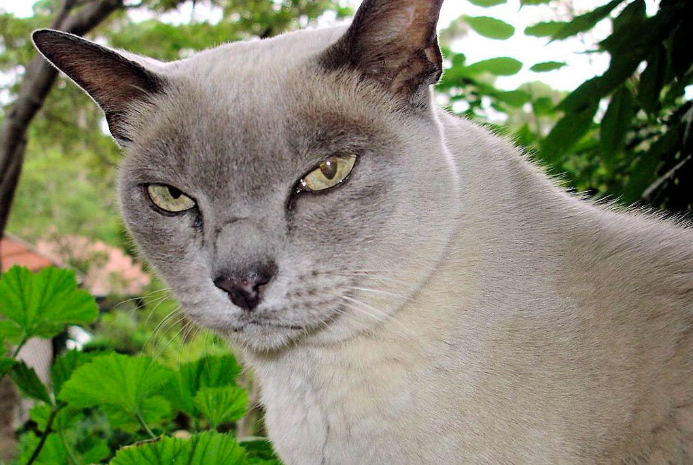
The Enchanting Burmese Cat: Affectionate, Playful, and Loyal
Enter the world of the Burmese cat, where elegance meets affection in a charming feline companion. Originating from the temples of Burma, these cats have captured the hearts of cat lovers worldwide with their striking appearance and loving nature. With their sleek coats, expressive eyes, and playful demeanor, Burmese cats are not just pets; they are cherished members of the family.
In this comprehensive guide, we delve into the captivating world of Burmese cats, exploring their history, physical characteristics, personality traits, and care requirements. Whether you’re a seasoned cat owner or considering adding a feline friend to your family, the Burmese cat’s unique blend of beauty, intelligence, and affection is sure to captivate you. Join us as we unravel the enchanting tale of the Burmese cat and discover why they are such beloved companions.
Burmese
Overview
The Burmese cat is a breed known for its striking appearance and affectionate nature. Originating from Burma (now Myanmar), these cats are renowned for their sleek, muscular bodies, expressive eyes, and silky coats. Burmese cats are often described as “people-oriented,” as they form strong bonds with their human companions and enjoy being part of the family. Their playful and curious nature makes them delightful companions for both children and adults alike.
History and Origins
The history of the Burmese cat can be traced back to ancient Burma, where they were considered sacred and kept by monks in temples. They were later brought to the West in the early 20th century and quickly gained popularity for their striking appearance and affectionate personality. The breed has since become a favorite among cat enthusiasts worldwide, known for its loving and loyal nature.
Physical Characteristics
- Coat and Colors: Burmese cats have short, sleek coats that lie close to the body. They come in a variety of colors, including sable, champagne, blue, and platinum. The coat is soft and silky to the touch, adding to the breed’s overall charm.
- Body Structure: Burmese cats are medium-sized with a muscular build. They have rounded heads, large, expressive eyes, and short, straight noses. Their compact bodies give them a sturdy appearance, and they move with grace and agility.
- Eyes and Ears: Their eyes are one of their most striking features, being large, expressive, and usually a deep, rich color that complements their coat. Their ears are medium-sized, slightly rounded at the tips, and set wide apart on the head.
Personality and Behavior
Burmese cats are known for their affectionate and sociable nature. They are often described as “dog-like” due to their tendency to follow their owners around the house and seek out human companionship. They are also highly intelligent and enjoy interactive play, making them great companions for families with children or other pets.
In addition to their affectionate nature, Burmese cats are also known for their vocalizations. They have a soft, sweet voice that they use to communicate with their owners, often engaging in “conversations” and expressing their needs and desires.

Health and Care
- Grooming: Burmese cats have short coats that require minimal grooming. Weekly brushing is usually sufficient to remove loose hair and keep their coat shiny. They also benefit from regular dental care to prevent oral health issues.
- Diet: A high-quality, balanced diet is essential for maintaining the health and vitality of Burmese cats. They should be fed a diet that is appropriate for their age, size, and activity level to ensure they receive the nutrients they need.
- Health Concerns: Burmese cats are generally healthy, but they can be prone to certain genetic conditions such as hypertrophic cardiomyopathy (HCM) and diabetes. Regular veterinary check-ups and a healthy diet can help manage these risks.
Training and Activities
Burmese cats are intelligent and can be trained to perform various tricks and commands. They enjoy interactive play and thrive on mental stimulation. Providing them with toys, puzzle feeders, and opportunities for play can help keep them entertained and prevent boredom.
Compatibility with Families and Other Pets
Burmese cats are known for their loving and social nature, making them great companions for families. They get along well with children and other pets, including dogs, as long as they are properly introduced. Their affectionate demeanor and playful nature make them a popular choice for households looking for a friendly and engaging pet.
Conclusion
The Burmese cat is a breed beloved for its affectionate nature, striking appearance, and playful personality. Whether you are looking for a loyal companion or a playful friend, the Burmese cat is sure to bring joy and warmth to your home. With their loving nature and sociable demeanor, Burmese cats make wonderful pets for families and individuals alike, enriching their lives with their presence and affection.
FAQs about Burmese Cats
What is the temperament of a Burmese cat like?
Burmese cats are known for their affectionate and social nature. They are often described as “dog-like” due to their loyalty and tendency to follow their owners around the house. They enjoy being involved in family activities and form strong bonds with their human companions.
Are Burmese cats good with children and other pets?
Yes, Burmese cats are generally good with children and other pets. They are playful and enjoy interactive play, making them great companions for families with children. They also get along well with other pets, including dogs, especially if they are introduced properly.
Do Burmese cats require a lot of grooming?
Burmese cats have short, sleek coats that require minimal grooming. Weekly brushing is usually sufficient to remove loose hair and keep their coat shiny. They also benefit from regular dental care to prevent oral health issues.
Are Burmese cats vocal?
Burmese cats are known for their soft, sweet voice, but they are not excessively vocal. They use their voice to communicate with their owners, often engaging in “conversations” and expressing their needs and desires.
What kind of environment is best for a Burmese cat?
Burmese cats thrive in environments where they have plenty of opportunities for play and interaction. They enjoy being part of the family and should have access to toys, scratching posts, and other enrichment activities. They also enjoy having access to outdoor enclosures or safe outdoor spaces where they can explore and indulge their natural instincts.
We appreciate you for taking the time to read this article!
Finally, we hope you found this article interesting? And what do you think about ”The Enchanting Burmese Cat: Affectionate, Playful, and Loyal!?”
Please feel free to share or inform your friends about this article and this site, thanks!
And let us know if you observe something that isn’t quite right.
-

 Pet Care2 years ago
Pet Care2 years agoThe Best Dog Collars For 2022
-

 Dogs2 years ago
Dogs2 years agoBichon Frise: The Happy, Playful, and Cuddly Companion
-

 Trending Pet Stories1 year ago
Trending Pet Stories1 year ago2023 ‘World’s Ugliest Dog’ Winner: Scooter’s Tale of Resilience
-

 Animals2 years ago
Animals2 years agoAre There Animals Having Down Syndrome?
-

 Pets2 years ago
Pets2 years agoThe Fascinating World Of The Red Chameleon
-

 Dogs2 years ago
Dogs2 years agoTop 10 Most Popular Dog Breeds According To AKC.
-

 Dogs2 years ago
Dogs2 years ago21 Dog Breeds That Resemble Bears Or Teddy Bears!
-

 Dogs2 years ago
Dogs2 years agoEskimo Dogs from Canada – What Are They? – Find Out!


